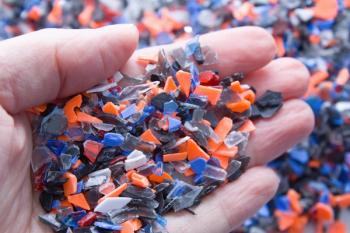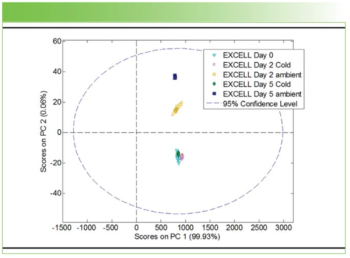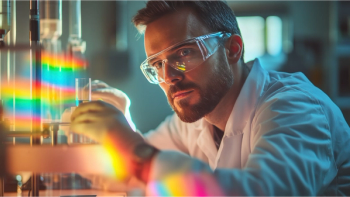
Surface-Enhanced Transmission Raman Spectroscopy (SETRS) Enhances Pharmaceutical Quality Control
Researchers from the University of Liege have demonstrated the potential of surface-enhanced transmission Raman spectroscopy (SETRS) for detecting impurities in pharmaceuticals. The study highlights SETRS’s superior sensitivity, precision, and efficiency in quantifying toxic impurities like 4-aminophenol (4-AP), offering a promising alternative to traditional methods.
Pharmaceutical quality control is undergoing a paradigm shift with the development of surface-enhanced transmission Raman spectroscopy (SETRS), a novel method that combines advanced spectroscopic techniques with enhanced transmission detection. Researchers from the University of Liege (ULiege), CIRM, ViBra-Sante hub, Laboratory of Pharmaceutical Analytical Chemistry at the Department of Pharmacy in Liege, Belgium, explored SETRS as an innovative solution for impurity analysis in complex drug matrices. This work, led by Julie Horne, Pierre Beckers, and their colleagues, marks the first study to evaluate SETRS for quantitative applications, specifically for the toxic impurity 4-aminophenol (4-AP) in paracetamol formulations (1).
Study Design and Methodology
The researchers employed a transmission Raman spectroscopy system (TRS 100, Agilent Technologies) to collect scattered photons through the sample, a method offering greater representativeness compared to conventional backscattering. The study evaluated key parameters such as laser beam size, power, sample volume, and collection optics to optimize SETRS performance. Experiments were conducted over five days using nine silver nanoparticle batches, with analysis by two operators to mimic real-world conditions (1).
Quantification of 4-AP concentrations (3–20 µg/mL) in liquid paracetamol formulations was carried out using both univariate and multivariate models. Univariate analysis targeted the 580 cm⁻¹ band of 4-AP, while multivariate analysis employed partial least squares (PLS) regression for a more comprehensive data interpretation (1).
Key Findings
The study demonstrated that SETRS, utilizing a transmission detection mode, offers enhanced sampling efficiency and signal stability, with an optimal sample volume of 900 µL and stabilized signal intensity achieved after 8 minutes. This mode provided greater representativeness and reduced fluorescence interference compared to traditional backscattering techniques. Both univariate and multivariate analytical approaches met ICH Q2(R2) guidelines for bias, repeatability, and precision, with the univariate method showing superior suitability for routine applications due to its lower sensitivity to inter-series variability (1). Additionally, SETRS displayed comparable or lower relative standard deviations (RSD) than backscattering methods, with smaller collection optics contributing to significant signal enhancement without increasing variability. These findings underscore SETRS's potential as a reliable, sensitive, and precise tool for impurity quantification in pharmaceuticals (1,2).
Implications for Pharmaceutical Quality Control
This study underscores SETRS’s potential to improve impurity detection in pharmaceuticals. Traditional methods like liquid chromatography, while effective, are time-consuming and require organic solvents. SETRS, by contrast, is eco-friendly, rapid, and adaptable, with the ability to accurately quantify impurities like 4-AP—a critical concern due to its kidney toxicity.
The researchers note that factors such as internal standards, vial geometry, and sample holder positioning warrant further exploration to enhance SETRS’s quantitative capabilities (1,2).
Future Directions
By showcasing SETRS’s capabilities, the study opens new avenues for its application in pharmaceutical analysis and beyond. Its compatibility with routine use and adaptability to diverse matrices make it a promising alternative to conventional techniques. This work represents a notable advance in pharmaceutical quality control providing a robust foundation for SETRS as an innovative, efficient, and precise tool for impurity analysis in complex drug formulations.
References
(1) Horne, J.; Beckers, P.; Sacré, P. Y.; Francotte, P.; Caudron, E.; Hubert, P.; Hubert, C.; De Bleye, C.; Ziemons, E. Surface Enhanced Transmission Raman Spectroscopy: Quantitative Performances for Impurity Analysis in Complex Matrices. J. Pharm. Biomed. Anal. 2025, 252, 116469. DOI:
(2) Vo‐Dinh, T.; Stokes, D. L.; Griffin, G. D.; Volkan, M.; Kim, U. J.; Simon, M. I. Surface‐Enhanced Raman Scattering (SERS) Method and Instrumentation for Genomics and Biomedical Analysis. J. Raman Spectrosc. 1999, 30 (9), 785–793. DOI:
Newsletter
Get essential updates on the latest spectroscopy technologies, regulatory standards, and best practices—subscribe today to Spectroscopy.




